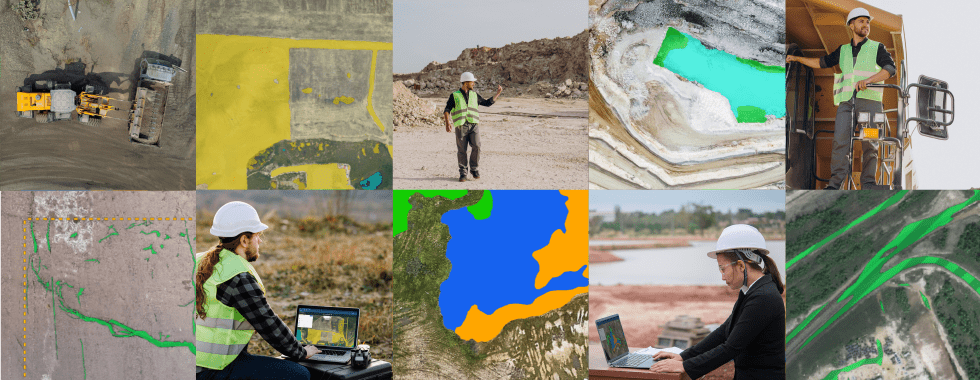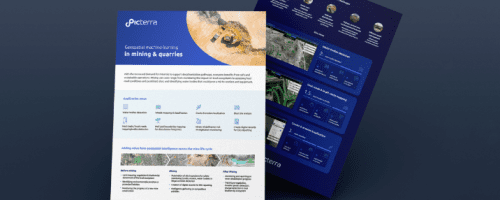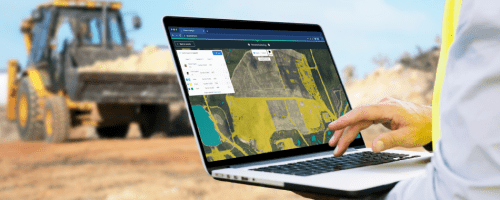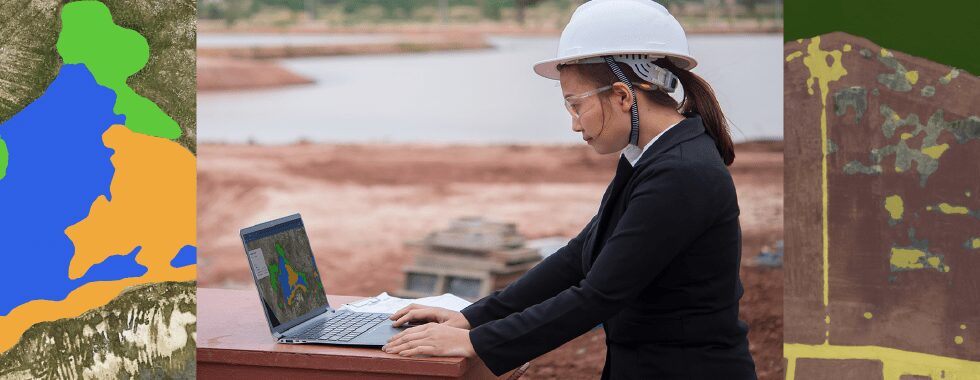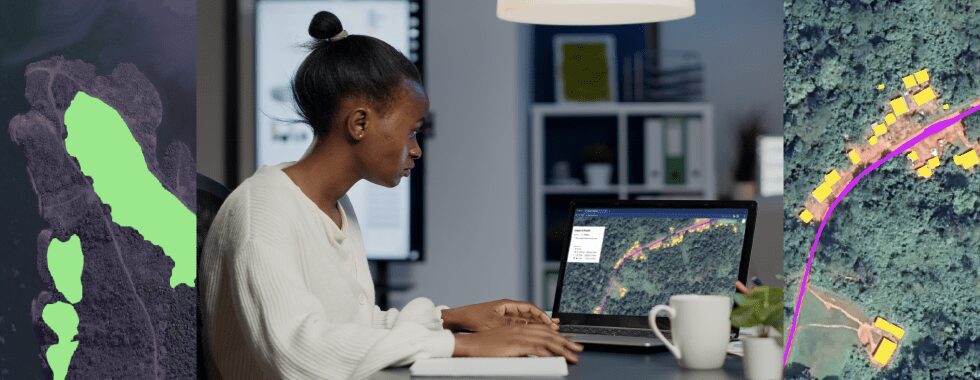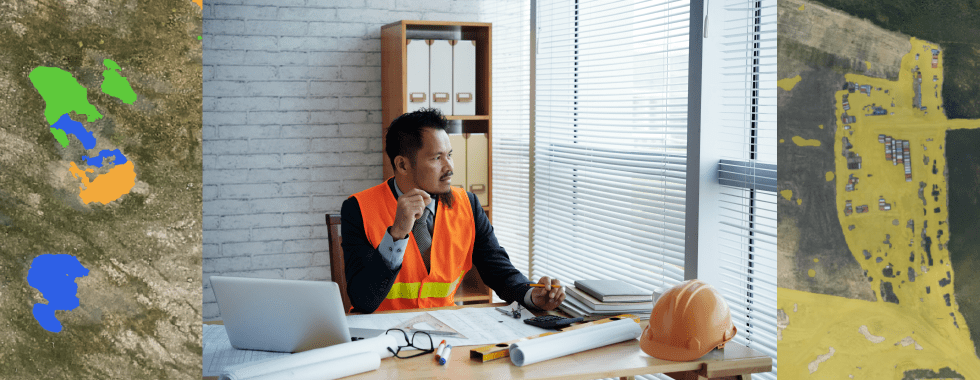The mining industry is a cornerstone of modern society, providing essential raw materials for everything from smartphones to skyscrapers. However, it is also an industry plagued by equipment failures, safety concerns, and the pressure to maximize production efficiency. In fact, a staggering 90% of mining companies cannot optimize their operational performance to meet the global demand for minerals.
As the mining industry seeks new solutions to enhance productivity and minimize risks, advanced analytics has emerged as a game-changing tool that can leverage artificial intelligence (AI) and machine learning (ML) algorithms to optimize production.
Advanced analytics, powered by AI and ML, processes vast amounts of data from various sources, such as satellite imagery and real-time monitoring systems, to deliver valuable insights for resource optimization, cost reduction, and decision-making processes. This leads to enhanced operational performance, improved safety, and optimized production in the mining industry.
In this blog post, we’ll explore how integrating advanced analytics, AI, and ML with earth observation imagery can revolutionize the mining industry, paving the way for Industry 4.0. We will cover topics such as understanding advanced analytics, its benefits in mining, use cases and case studies, and the techniques and tools that drive it. Finally, we’ll delve into the techniques and tools that drive advanced analytics, exploring the latest developments in AI and ML that are transforming the mining industry.
What is advanced analytics?
Advanced analytics refers to the process of extracting meaningful insights, patterns, and predictions from complex data sets using sophisticated techniques and tools. It goes beyond traditional analytics, which primarily focuses on descriptive statistics and reporting, to provide deeper, actionable insights that empower businesses to make more informed decisions and optimize operations.
In the context of earth observation imagery, advanced analytics leverages the power of artificial intelligence (AI), machine learning (ML), and other cutting-edge technologies to detect objects, patterns, and changes in images captured by satellites and drones.
Want to learn more about how geoAI can be used in mining & quarries?
One of the key differences between advanced analytics and traditional analytics is the level of complexity and the depth of insights derived from the data. While traditional analytics focuses on understanding what has happened in the past, advanced analytics delves into why it happened, what could happen in the future, and how to influence outcomes. For Picterra’s applications, this means not only analyzing the content of earth observation imagery but also making predictions about future events and changes in the environment based on the patterns and trends identified.
Advanced analytics employs a wide range of techniques and tools that help analyze data and extract valuable information. Some of the most common methods in the context of earth observation imagery include:
Object Detection: AI and ML algorithms can be trained to automatically detect and identify specific objects within satellite and drone images. This enables organizations to monitor assets, track changes, and assess potential risks in real-time.
Pattern Recognition: Advanced analytics can identify and analyze recurring patterns within earth observation imagery, such as land use, vegetation, and urban development. This helps organizations understand the dynamics of the environment and make more informed decisions.
Change Detection: By comparing historical and current imagery, advanced analytics can identify changes over time, such as urban expansion, deforestation, or infrastructure development. This allows organizations to monitor the impact of their activities and develop strategies for sustainable growth.
Predictive Modeling: In the context of earth observation imagery, predictive modeling leverages historical data to develop algorithms that can forecast future environmental changes. By applying ML techniques, such as regression analysis, decision trees, and neural networks, predictive models enable organizations to anticipate future events and make data-driven decisions.
In conclusion, advanced analytics is a powerful tool that harnesses the power of AI, ML, and other cutting-edge technologies to analyze complex earth observation imagery and provide deeper insights than traditional analytics. By utilizing various techniques and tools, advanced analytics enables organizations to optimize their operations, make data-driven decisions, and uncover hidden growth opportunities.
For the mining industry, it plays a crucial role in improving production efficiency, reducing costs, and ensuring the safety and sustainability of mining operations by leveraging AI and ML algorithms to detect objects, patterns, and changes in satellite and drone imagery.
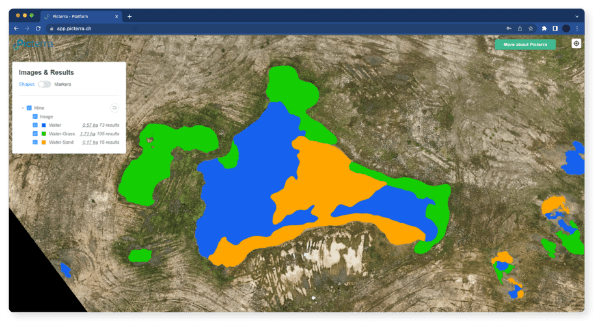
The benefits of advanced analytics in mining
Real-time monitoring
One of the most significant advantages of advanced analytics in the mining industry is its ability to provide real-time monitoring. By leveraging AI and ML algorithms, mining companies can process vast amounts of earth observation imagery from satellites and drones to detect objects, patterns, and changes in near real-time. This enables organizations to closely monitor the progress of their mining operations, track the movement of equipment, and assess potential risks.
Detecting anomalies and equipment failures is a crucial aspect of real-time monitoring. Advanced analytics can identify irregularities, such as unexpected changes in landforms, variations in material flows, or early signs of equipment malfunction. Spotting these issues early allows mining companies to take prompt corrective action, reducing downtime and minimizing potential losses.

Predictive maintenance and equipment optimization
Predictive maintenance is the process of using advanced analytics to identify potential equipment failures before they occur. It enables mining companies to schedule maintenance more effectively, minimizing downtime and maximizing the lifespan of the equipment. Equipment optimization, on the other hand, involves using data-driven insights to ensure that assets are used in the most efficient way possible.
Through AI and ML algorithms, advanced analytics can analyze historical data and identify patterns that indicate impending equipment failures or inefficiencies. By monitoring these patterns in real-time, mining companies can proactively address issues before they escalate, leading to improved equipment performance and reduced operational costs.
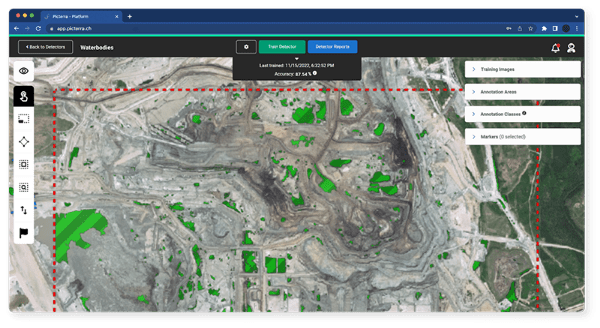
Resource optimization
Advanced analytics can also help mining companies optimize their use of resources. By analyzing earth observation imagery and other relevant data, organizations can gain insights into the distribution and quality of mineral deposits and the most efficient extraction methods. This enables them to allocate resources more effectively, minimizing waste and maximizing production efficiency.
Resource optimization benefits mining companies by reducing operational costs, increasing production output, and promoting sustainable mining practices. Through advanced analytics, organizations can better understand the environmental impact of their operations and develop strategies to mitigate potential risks and enhance their overall performance.
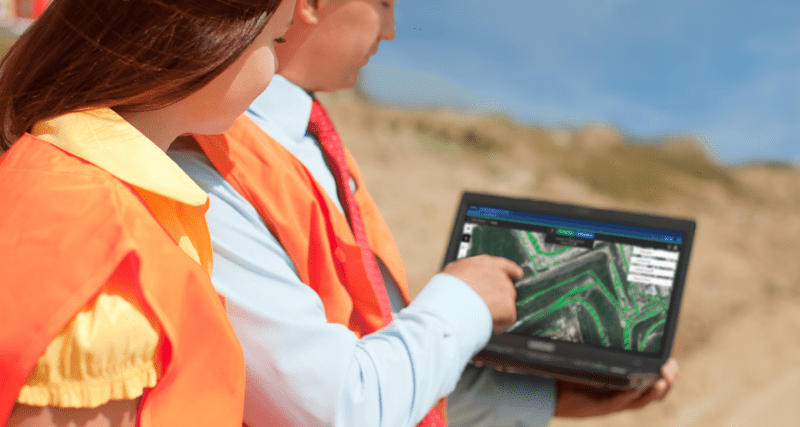
Improved safety
Safety is a paramount concern in the mining industry, and advanced analytics can play a significant role in improving safety standards. By providing real-time monitoring of mining operations, organizations can swiftly detect potential hazards, such as equipment failures, structural weaknesses, or unsafe working conditions. This enables them to take immediate action to protect their workforce and assets.
In addition, advanced analytics can help mining companies develop predictive safety models by analyzing historical data on accidents and incidents. These models can identify trends and potential safety risks, allowing organizations to implement proactive safety measures and reduce the likelihood of accidents occurring.
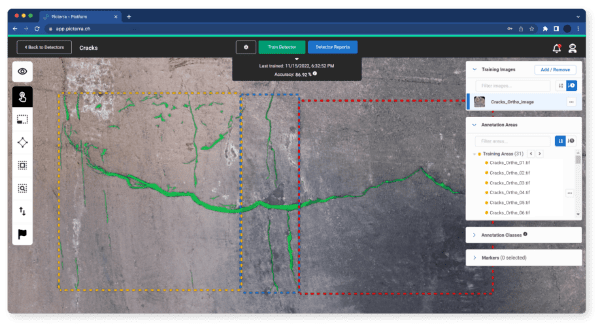
Use cases and case studies
The following use cases and case studies illustrate how mining companies have successfully implemented advanced analytics using Earth Observation (EO) imagery to optimize operations and overcome industry challenges.
Goldcorp, one of the world’s leading gold producers, has embraced advanced analytics using EO imagery to optimize its exploration process. The company utilized AI and ML algorithms to analyze satellite and drone imagery, along with geological data, resulting in identifying new exploration targets. This innovative approach helped Goldcorp discover new gold deposits, streamline its exploration process, reduce costs, and improve resource allocation.
Rio Tinto, a global mining giant, has adopted advanced analytics and EO imagery to enhance operational efficiency and safety. The company implemented a real-time monitoring system that leverages AI and ML algorithms to analyze satellite imagery, enabling them to detect potential environmental hazards and monitor the progress of their mining operations. As a result, Rio Tinto can proactively address risks, ensure regulatory compliance, and optimize the allocation of resources.
BHP Billiton, one of the world’s largest mining companies, has integrated advanced analytics and EO imagery into its operations to improve safety and optimize resources. The company has successfully reduced the number of safety incidents at its mining sites by analyzing historical satellite imagery and using predictive models.
Additionally, advanced analytics has allowed BHP Billiton to optimize its drilling operations by identifying the most efficient extraction methods based on satellite imagery, resulting in significant cost savings and improved efficiency.
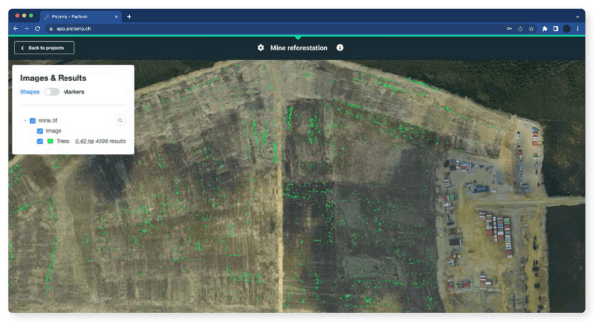
Many challenges and limitations are associated with implementing advanced analytics using EO imagery in the mining industry. Some of these include:
Data Quality and Availability: The effectiveness of advanced analytics relies heavily on the quality and availability of data. Inaccurate, incomplete, or outdated EO imagery can compromise the accuracy of predictions and insights generated by AI and ML algorithms. Ensuring data integrity and updating data sources regularly is essential for successful implementation.
Integration with Existing Systems: Integrating advanced analytics with legacy systems and processes can be complex and time-consuming. Mining companies must evaluate the compatibility of advanced analytics solutions with their existing infrastructure and be prepared to invest in necessary upgrades or replacements.
Skills Gap and Training: Adopting advanced analytics often requires specialized skills and knowledge in AI, ML, and data analysis. However, Picterra’s platform is designed to be user-friendly, allowing mining companies to leverage advanced analytics and EO imagery without requiring extensive technical expertise. This ease of use enables organizations to quickly integrate advanced analytics into their operations and benefit from its potential.
Privacy and Security Concerns: Mining companies must ensure that the data used in advanced analytics is stored and processed securely, adhering to industry regulations and privacy requirements. Implementing robust security measures and following best practices for data privacy is crucial to safeguard sensitive information.
Advanced analytics techniques and tools
Machine learning and artificial intelligence
Machine Learning (ML) and Artificial Intelligence (AI) play a vital role in advanced analytics for the mining industry. These technologies allow mining companies to analyze vast amounts of EO imagery and other data sources, detecting patterns, objects, and changes that help optimize operations. ML and AI can provide valuable insights, such as identifying potential mineral deposits and predicting equipment failures, enabling proactive decision-making that leads to improved operational efficiency and proactive risk management.

Big data and data analytics
Big data and data analytics form critical components of advanced analytics. They enable mining companies to process large volumes of structured and unstructured data, such as sensor data, geological surveys, and EO imagery. Data analytics systematically uncovers trends, patterns, and insights, leading to informed decisions based on actual data and trends. Analyzing big data also contributes to better resource allocation, reducing operational costs, and assessing the environmental impact of mining operations, promoting the development of sustainable strategies.
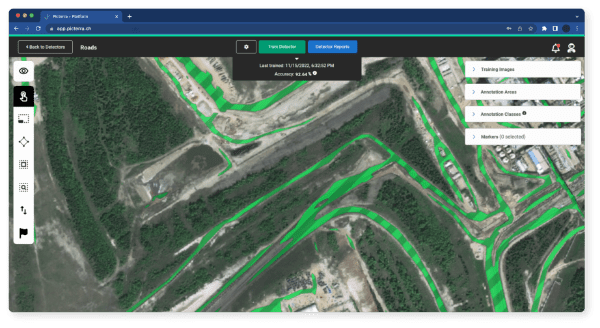
Data visualization and dashboarding
Data visualization and dashboarding tools are essential for communicating complex data and insights in an easily digestible format. By transforming raw data into visual representations, such as graphs, charts, and maps, mining companies can better understand their operations and identify areas for improvement. Interactive, customizable dashboard interfaces display real-time data, enabling users to quickly monitor key performance indicators and make informed decisions. Data visualization and dashboarding improve communication and collaboration within mining organizations. These tools lead to more effective decision-making and shared understanding, as stakeholders can easily interpret and discuss the data.
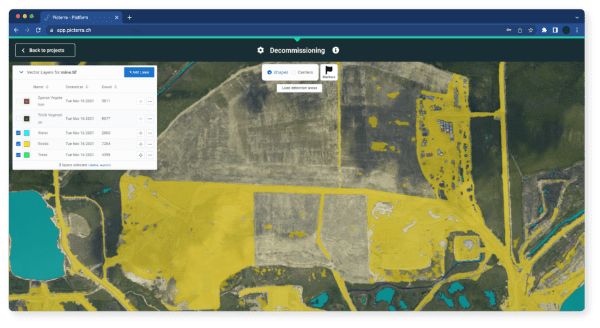
Conclusion
In conclusion, advanced analytics holds immense potential for the mining industry, offering innovative solutions to address its various challenges. Throughout this blog post, we’ve explored the essential aspects of advanced analytics, including its definition, how it differs from traditional analytics, and the techniques and tools employed.
We’ve also highlighted the numerous benefits that advanced analytics brings to mining companies, such as real-time monitoring, predictive maintenance, resource optimization, and improved safety. By showcasing use cases and case studies, we’ve demonstrated Earth Observation (EO) imagery combined with advanced analytics can have a significant impact on mining operations.
Furthermore, we’ve discussed the essential techniques and tools in advanced analytics, including Machine Learning and Artificial Intelligence, big data and data analytics, and data visualization and dashboarding. Each of these technologies plays a crucial role in unlocking the full potential of advanced analytics for mining companies.
As the mining industry continues to evolve and face new challenges, mining companies must stay ahead of the curve and leverage advanced analytics to optimize their operations, reduce costs, and improve safety. By implementing advanced analytics, mining companies can gain a competitive edge and contribute to a more sustainable and responsible industry. We encourage mining companies to explore the potential of advanced analytics and consider integrating these powerful technologies into their operations.
